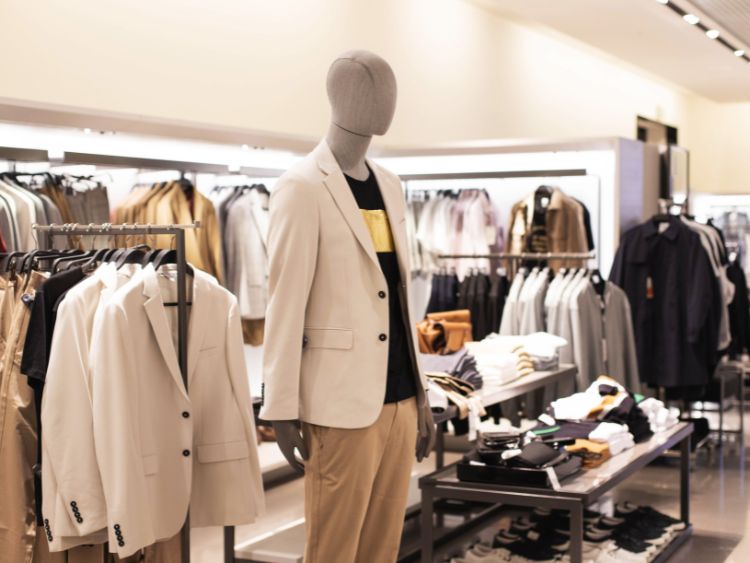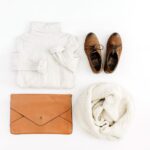The 1960s fashion scene was nothing short of revolutionary. It was an era that saw a complete shift from the structured, formal styles of the 1950s to more relaxed, bold, and experimental trends. Whether it was the mini-skirt craze, bold prints, or the rise of unisex fashion, the 1960s changed the way people dressed and expressed themselves. So, let’s take a nostalgic trip back in time and explore the iconic styles that defined this unforgettable decade.
The Birth of the Mini-Skirt
The mini-skirt became synonymous with 1960s fashion. Designed by Mary Quant, this daring piece of clothing symbolized the youth revolution. Women were no longer confined to conservative skirts that grazed the knee. Instead, they embraced shorter hemlines, highlighting their confidence and independence.
The mini-skirt quickly became a symbol of rebellion against traditional norms, and it wasn’t just worn by young women. Celebrities like Twiggy, the iconic British model, helped popularize the trend. Soon, the mini-skirt was a staple in wardrobes around the world.
Why the Mini-Skirt?
- It gave women the freedom to express their femininity.
- It was versatile, allowing for both casual and dressy occasions.
- It paired well with the emerging go-go boots trend, creating a chic and modern look.
Bold Prints and Psychedelic Patterns
The 1960s were also marked by bold prints and psychedelic patterns, a reflection of the era’s cultural shifts. As the counterculture movement gained momentum, fashion followed suit, embracing loud colors, swirling shapes, and eye-popping designs. These prints weren’t just confined to clothing; they found their way into accessories, home decor, and even automobiles.
Designers like Emilio Pucci and André Courrèges led the charge in creating clothes that embodied the free spirit of the decade. Whether it was geometric shapes or tie-dye designs, 1960s fashion was anything but subtle.
Popular 1960s Patterns:
- Polka dots: Playful and retro, polka dots were everywhere, from dresses to accessories.
- Florals: Bold and bright, floral patterns were a nod to the “flower power” movement.
- Op art: Inspired by optical illusions, op art patterns added a dynamic twist to clothing, giving off a futuristic vibe.
The Influence of Mod Fashion
Mod fashion, short for “modernist,” was a subculture that originated in London in the early 1960s. It was characterized by clean lines, bold colors, and a minimalist aesthetic. The mod look was heavily influenced by the music scene, particularly by bands like The Beatles and The Who.
The iconic A-line dress was a key mod staple. These dresses were simple yet chic, often adorned with geometric patterns or bold color blocks. Mod fashion also embraced a unisex approach, with both men and women donning similar styles, like slim-cut trousers, turtlenecks, and loafers.
The Rise of Unisex Fashion
Speaking of unisex fashion, the 1960s marked the beginning of a gender-neutral approach to clothing. This was a time when men and women began experimenting with androgynous styles, blurring the lines between masculine and feminine fashion.
Designers like Yves Saint Laurent and Pierre Cardin played pivotal roles in promoting this trend. Women wore pantsuits, traditionally reserved for men, while men started wearing floral shirts and more fitted clothing. This was a radical departure from the strict gendered clothing of previous decades.
Hippie Culture and the Bohemian Look
By the late 1960s, the hippie movement had taken the world by storm, and fashion was no exception. The bohemian look, characterized by loose, flowing garments, earthy tones, and natural fabrics, was a stark contrast to the structured styles of the earlier part of the decade.
Hippie fashion was all about comfort and self-expression. Long, flowing skirts, fringed vests, and peasant blouses became popular choices. Accessories like headbands, beaded necklaces, and oversized sunglasses completed the look. Tie-dye also became a staple of the hippie wardrobe, symbolizing the psychedelic culture that was sweeping the nation.
Key Elements of the Bohemian Look:
- Fringe: Often found on jackets, vests, and bags, fringe added a laid-back, free-spirited vibe.
- Bell-bottoms: These wide-legged pants were a must-have for both men and women, often paired with platform shoes or sandals.
- Beads and headbands: Accessories were essential to the boho look, with beaded necklaces and headbands adding a touch of whimsy.
Icons of 1960s Fashion
Several fashion icons emerged in the 1960s, shaping the trends that would define the era. Twiggy, with her pixie cut and mod outfits, became the face of the decade’s youth culture. Jackie Kennedy, the First Lady of the United States, was another major influence. Her elegant, tailored suits and pillbox hats set the standard for sophisticated style, even as the world around her embraced more experimental looks.
Another key figure was Brigitte Bardot, whose effortless, carefree style, often referred to as “French chic,” influenced many. Bardot popularized the off-the-shoulder “Bardot top,” as well as tousled hair and cat-eye makeup, giving women a new standard of beauty and style to emulate.
Footwear: From Go-Go Boots to Platforms
The 1960s were as innovative in footwear as they were in clothing. The go-go boot, a knee-high white boot often paired with mini-skirts, became a fashion must-have. Meanwhile, by the end of the decade, platform shoes had entered the scene, aligning with the rise of disco culture.
Men also had their own distinctive footwear trends, with Chelsea boots becoming a popular choice. These ankle-high boots, often made from leather or suede, were sleek and perfect for the mod look.
FAQs About 1960s Fashion
Q: What was the most iconic clothing item of the 1960s?
A: The mini-skirt is arguably the most iconic item of 1960s fashion. Designed by Mary Quant, it represented the decade’s progressive attitudes and youthful energy.
Q: How did 1960s fashion differ from previous decades?
A: The 1960s saw a break from the formal, conservative styles of the 1950s. Fashion became more experimental, bold, and expressive, with shorter hemlines, brighter colors, and unisex styles gaining popularity.
Q: What role did music play in 1960s fashion?
A: Music was a huge influence on 1960s fashion. The mod movement, in particular, was driven by the British music scene, while the rise of psychedelic rock influenced the bold patterns and colors of the hippie style.
Q: What accessories were popular in the 1960s?
A: Popular accessories included oversized sunglasses, headbands, beaded necklaces, and bold earrings. Go-go boots and platform shoes were also fashion staples.
Conclusion: The Lasting Legacy of 1960s Fashion
The 1960s were a transformative decade for fashion. From the rebellious mini-skirt to the free-spirited bohemian look, this era pushed boundaries and redefined what it meant to be fashionable. Even today, the influence of 1960s fashion can be seen in modern trends, with retro styles making frequent comebacks. The decade’s mix of boldness, creativity, and self-expression continues to inspire designers and fashion enthusiasts around the world.
Authoritative Links:
- https://www.vam.ac.uk/articles/the-1960s-mini-skirt
- https://www.theguardian.com/fashion/2019/aug/16/how-the-60s-changed-fashion-forever
- https://www.fashionhistory.edu/1960s-fashion






